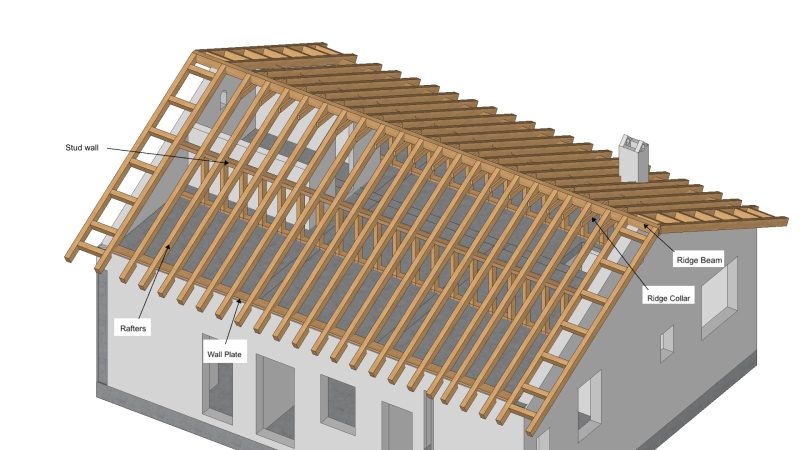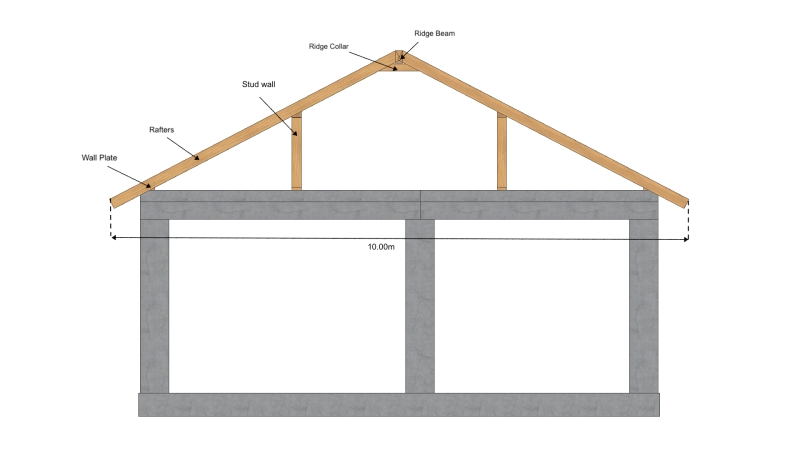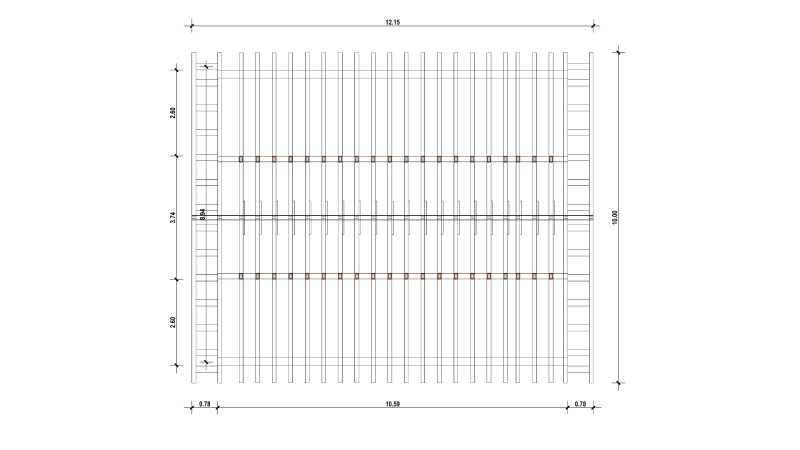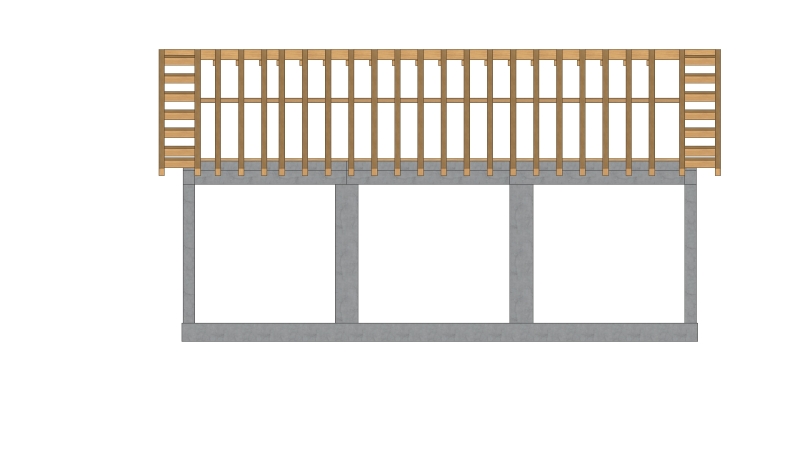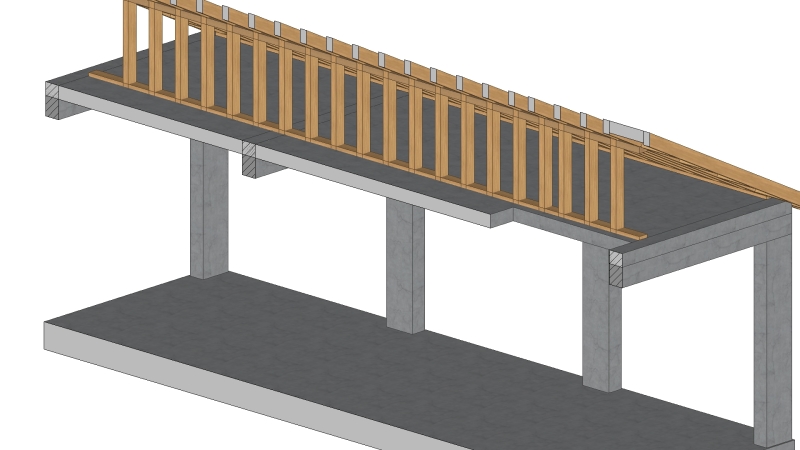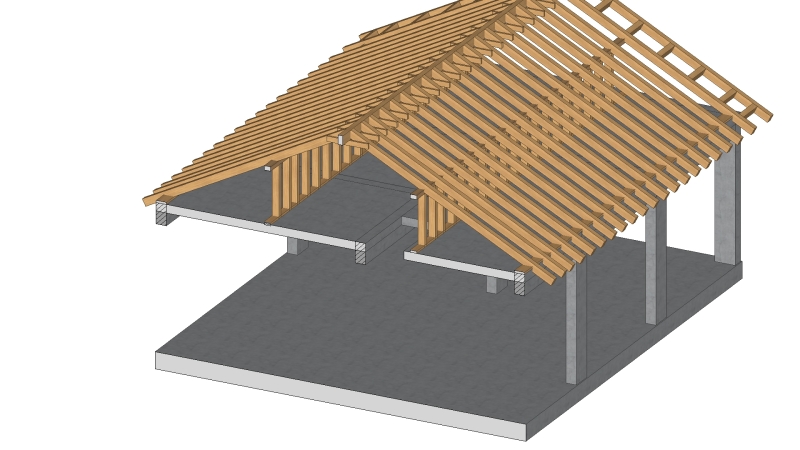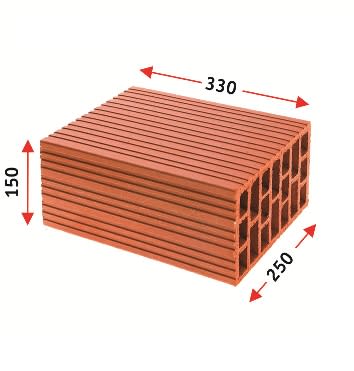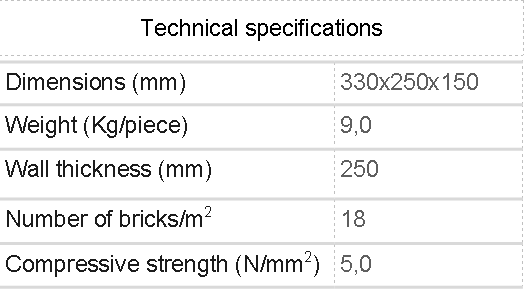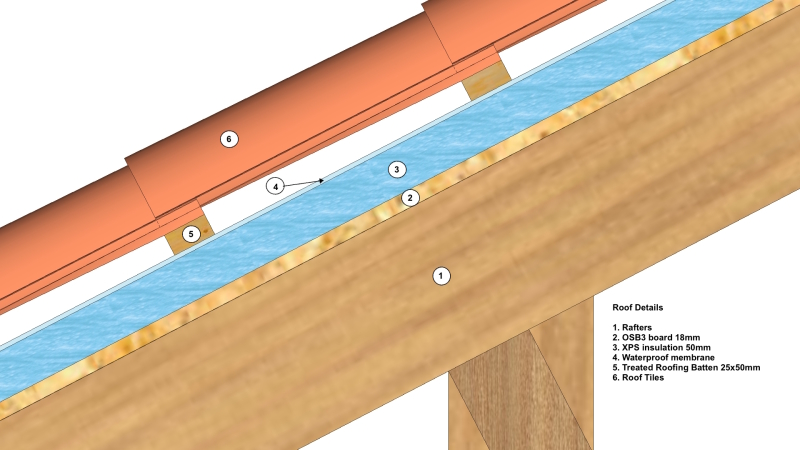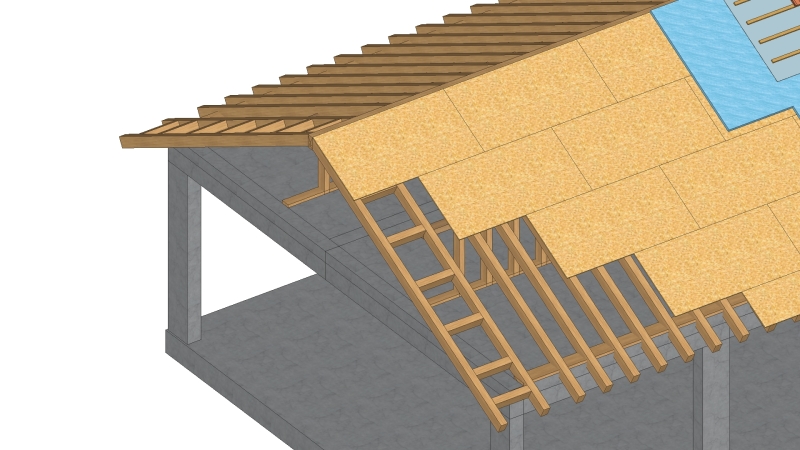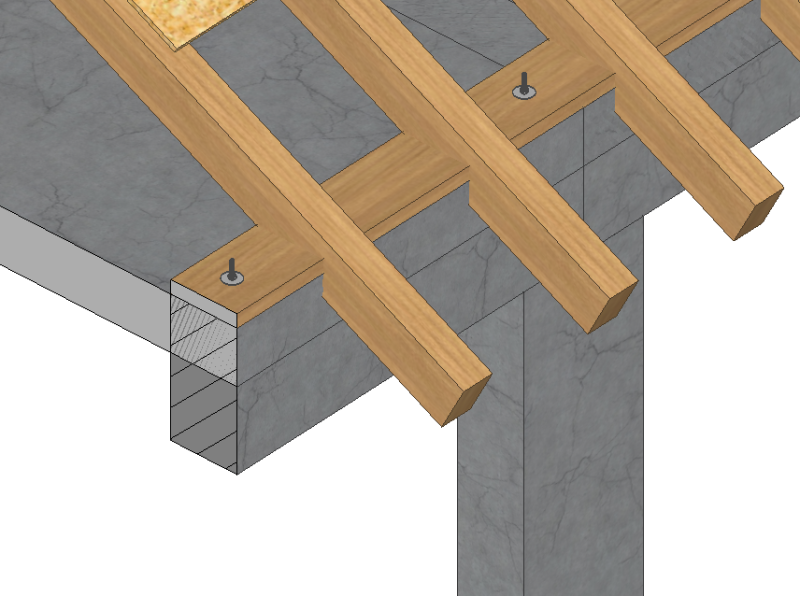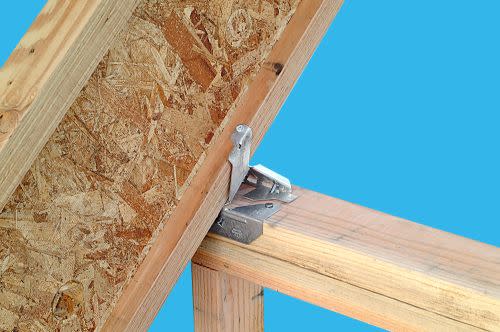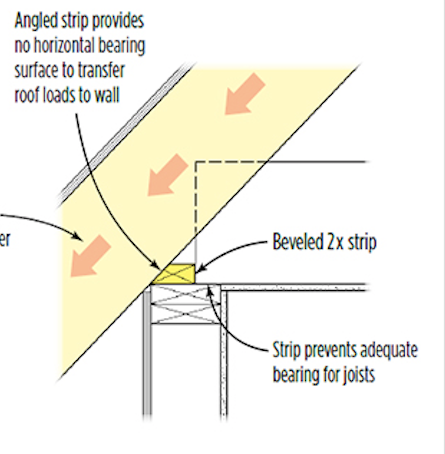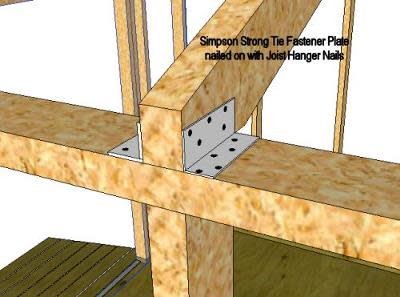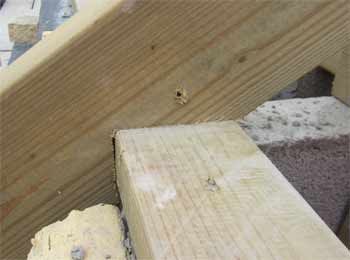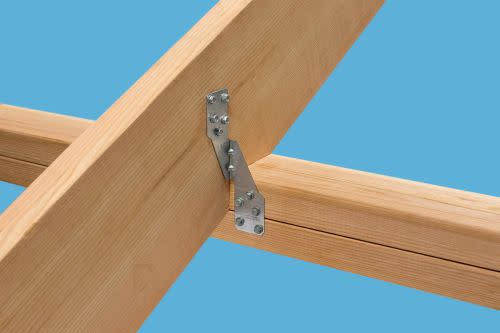kellez
Civil/Environmental
- Nov 5, 2011
- 276
Hi,
I am designing a timber roof to be supported by a RC concrete slab. As you can see from the picture the timber frame is simply composed
of inclined beams supported by timber columns that connect to the RC slab.
Now my question is, what is the best way to connect the timber columns to the Rc slab? I am thinking of steel brackets but not really sure.

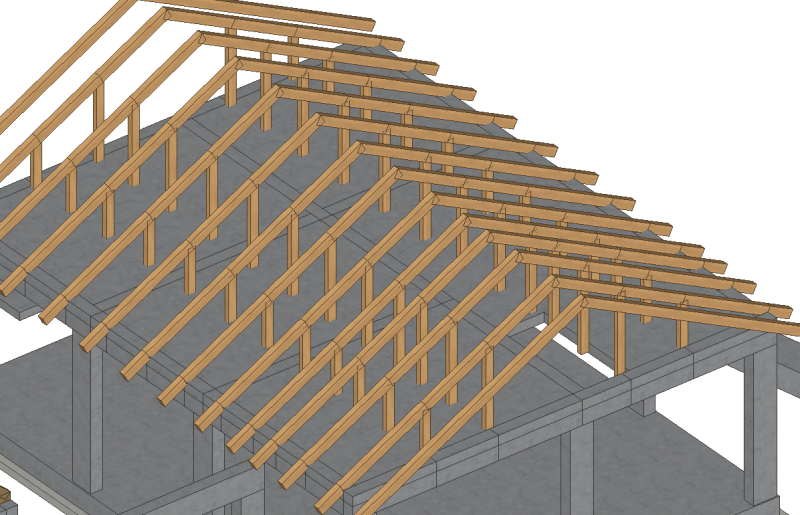
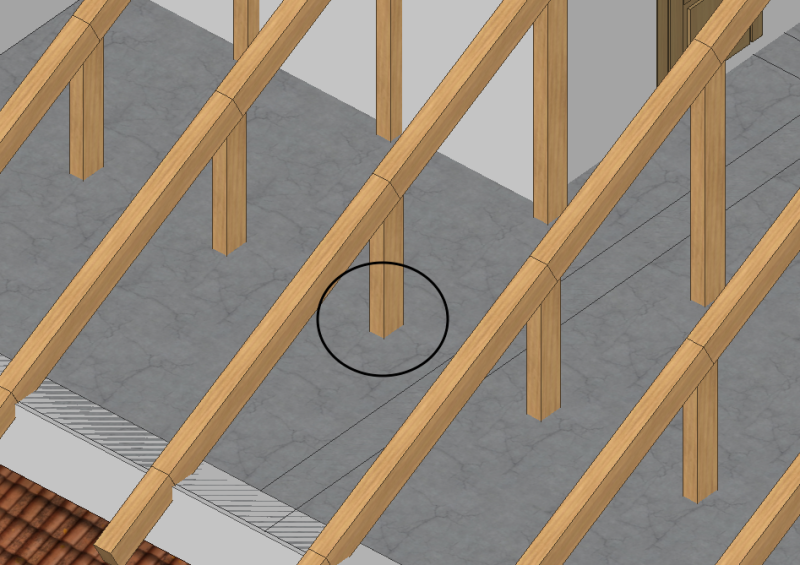
I am designing a timber roof to be supported by a RC concrete slab. As you can see from the picture the timber frame is simply composed
of inclined beams supported by timber columns that connect to the RC slab.
Now my question is, what is the best way to connect the timber columns to the Rc slab? I am thinking of steel brackets but not really sure.




